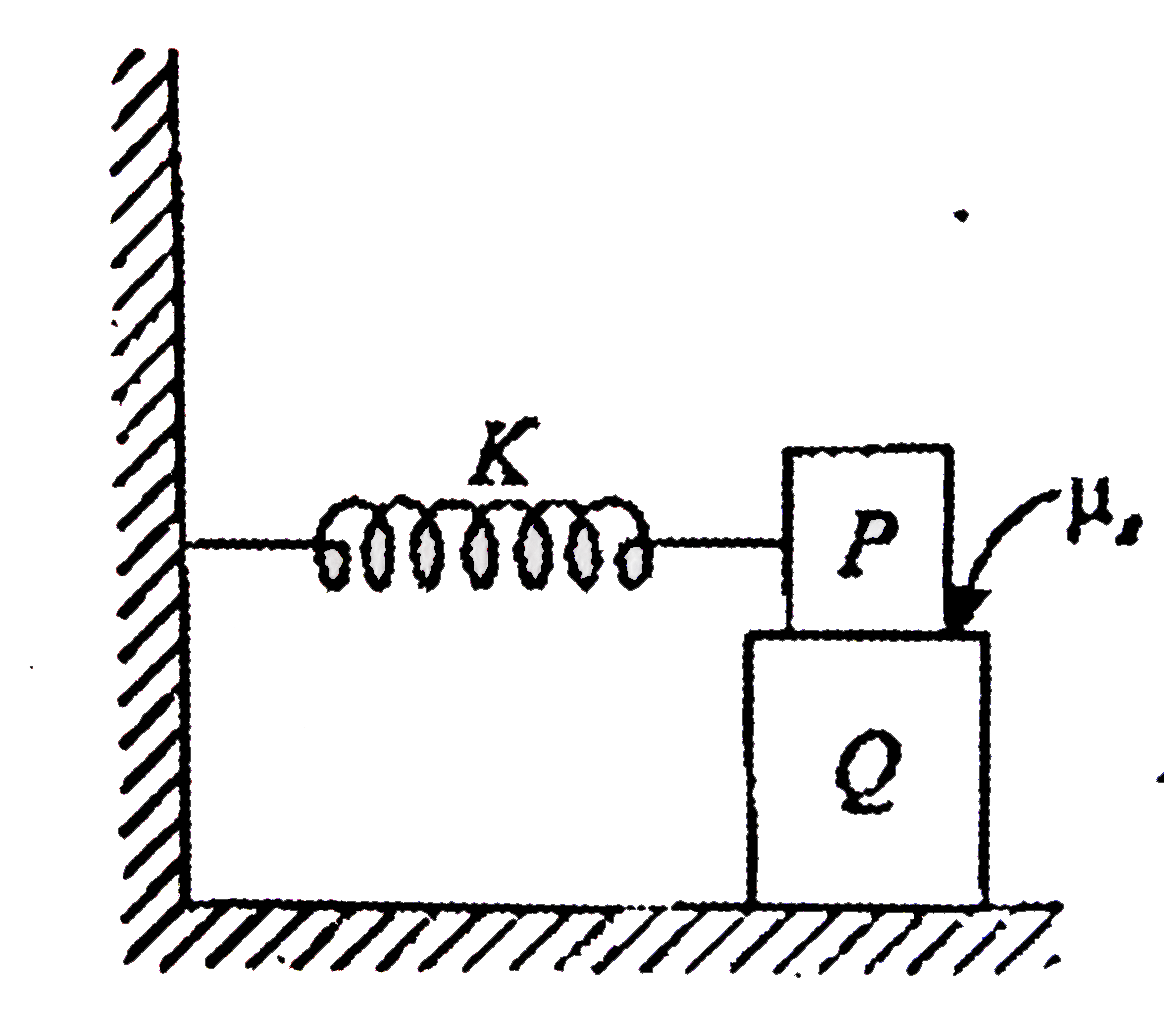Two equal masses are attached to the two ends of a spring of spring constant k. The masses are pulled a part symmetrically to stretch the spring by a length x over its natural length. The work done by the spring on each mass is.
12kx2
−12kx2
14kx2
−14kx2
The correct Answer is:D
Step by step video, text & image solution for Two equal masses are attached to the two ends of a spring of spring constant k. The masses are pulled a part symmetrically to stretch the spring by a length x over its natural length. The work done by the spring on each mass is. by Physics experts to help you in doubts & scoring excellent marks in Class 12 exams.
Updated on:21/07/2023Topper's Solved these Questions
- KINEMATICSBook:FIITJEEChapter:KINEMATICSExercise:MCQ (MULTIPLE CORRECT)
Explore 15 Videos
- KINEMATICSBook:FIITJEEChapter:KINEMATICSExercise:ASSERTION-REASON MCQ ( SINGLE CORRECT)
Explore 8 Videos
- KINEMATICSBook:FIITJEEChapter:KINEMATICSExercise:SECTION (II) : (SUBJECTIVE )
Explore 33 Videos
- HEAT AND TEMPERATUREBook:FIITJEEChapter:HEAT AND TEMPERATUREExercise:NUMERICAL BASES QUESTIONS
Explore 1 Video
- LAWS OF MOTIONBook:FIITJEEChapter:LAWS OF MOTIONExercise:COMPREHENSION-III
Explore 2 Videos
Similar Questions
Two equal masses are attached to the two end of a spring of force constant k the masses are pulled out symmetrically to stretch the spring by a length 2x0 over its natural length. Find the work done by the spring on each mass.
View SolutionTwo blocks of masses m, and m, are connected to the ends of a spring of spring constant k. System is kept at rest on a frictionless horizontal floor with spring in its natural length. Both the blocks are pulled along opposite directions with forces of same magnitude F. Calculate maximum elongation of spring and distances travelled by the blocks during this motion.
View Solution
Knowledge Check
Two equal masses are attached to the two ends of a spring of spring constant k. The masses are pulled out symmetrically to stretch the spring by a length x over its natural length. The work done by the spring on each mass is
A12kx2B−12kx2C14kx2D−14kx2Two equal masses are attached to the two ends of a spring of spring constant k. The masses are pulled a part symmetrically to stretch the spring by a length x over its natural length. The work done by the spring on each mass is.
A12kx2B−12kx2C14kx2D−14kx2Two equal masses are attached to the two ends of a spring of spring constant k. The masses are pulled out ,YI)l~etri~ally to ~tretch the spring by a length· x over its natural length. The work done by the spring on each mass is:
A12kx2B−12kx2C14kx2D−14kx2
An object of mass m, oscillating on the end of a spring with spring constant k has amplitude A. its maximum speed is
View SolutionA spring of spring constant k is cut in three equal pieces. The spring constant of each part will be
View SolutionAn elastic spring of unstretched length L and spring constant K is stretched by a small length x. It is further stretched by another small length y. the work done in second stretcing is
View SolutionTwo masses m and 2m are attached to two ends of an ideal spring as shown in figure. When thye spring is in the compressed state, the energy of the spring is 60 J, if the spring is released, then at its natural length

View SolutionA block Q of mass 2m is placed on a horizontal frictionless plane. A second block of mass m is placed on it and is connected to a spring of spring constant K, the two block are pulled by distance A. Block Q oscillates without slipping. The work done by the friction force on block Q when the spring regains its natural length is:

View Solution

